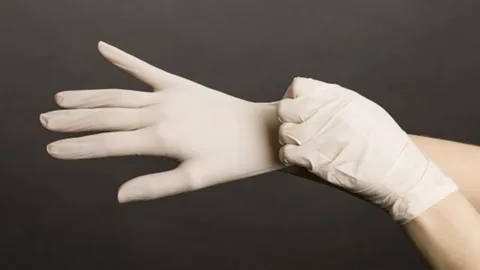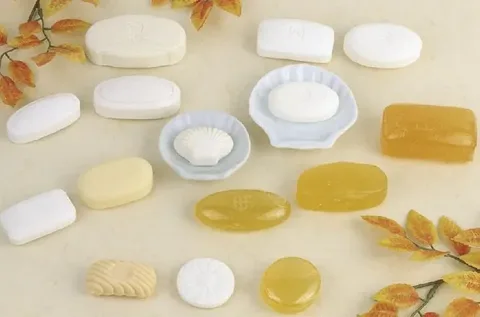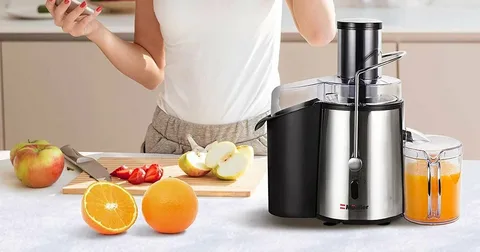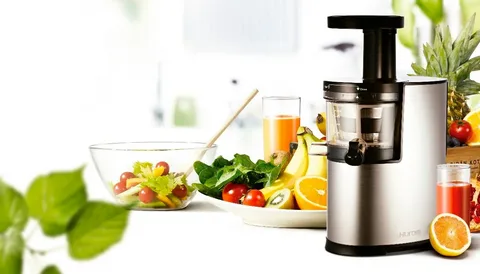Safety and hygiene should be at the forefront of every chef’s mind when handling food. Whether running a bustling restaurant kitchen or preparing snacks for a backyard barbecue, keeping your hands clean is essential. Enter latex gloves—your reliable partner in maintaining cleanliness while working with food. These gloves not only provide a barrier against contaminants but also enhance your overall efficiency in the kitchen.
But are they as beneficial as they seem? Let’s explore why latex-gloves have become an indispensable tool in food preparation, including their advantages, concerns about allergies, proper usage, and much more. Get ready to discover how you can elevate your food safety practices today!
The Importance of Safety and Hygiene in the Food Industry
Safety and hygiene are the cornerstones of the food industry. They protect consumers from foodborne illnesses and ensure that products meet health standards. Every step in the food production process, from handling to packaging, carries risks. Contamination can occur at any point, making vigilant practices essential.
Employees must be trained rigorously on sanitation protocols. Regular handwashing and clean workspace habits create a safer environment. Hygiene extends beyond individual actions; it encompasses equipment cleanliness as well. Surfaces should be sanitized frequently to prevent cross-contamination.
Maintaining high safety standards enhances consumer trust. Customers who know that businesses prioritize their well-being are more likely to return for future purchases. In an industry where negligence can have serious repercussions, prioritizing safety is non-negotiable. The stakes are high—both for public health and business reputation.
Advantages of Using Latex-gloves for Food Handling
Latex-gloves offer a protective barrier that is essential in food handling. They help prevent contamination, ensuring safe food preparation for workers and consumers.
One significant advantage is their comfort. Latex-gloves provide excellent dexterity, allowing chefs to handle delicate ingredients without losing grip or feel. This tactile sensitivity is crucial when preparing intricate dishes.
Another benefit lies in the elasticity of latex material. These gloves stretch easily, fitting snugly on hands while offering durability during extended use. This reduces the risk of tears and ensures reliable protection against spills and splashes.
Moreover, latex-gloves are cost-effective compared to some alternatives. Their affordability makes them accessible for various food businesses, from small kitchens to large-scale operations.
Proper usage can be integral to maintaining high hygiene standards in any culinary environment.
Common Concerns about Latex Allergies and Alternatives to Consider
Latex allergies are a genuine concern for many who work in food handling. For some individuals, contact with latex can trigger allergic reactions ranging from mild skin irritation to severe anaphylaxis. Fortunately, there are alternatives available that provide safety without compromising on hygiene. Nitrile gloves are popular due to their durability and resistance to punctures and chemicals. They also offer excellent tactile sensitivity while being latex-free.
Vinyl gloves present another option for those seeking cost-effective solutions. Though not as robust as nitrile or latex, they can be suitable for low-risk tasks where heavy-duty protection isn’t required. When choosing the right glove, assessing your needs and any potential allergenic concerns within your team is vital. This proactive approach ensures both safety and comfort in the workplace environment.
Proper Usage and Disposal of Latex-gloves in Food Handling
Using latex-gloves appropriately is essential in the food handling process. Start by ensuring your hands are clean before putting on a pair. This reduces contamination and promotes hygiene right from the beginning. When wearing gloves, avoid touching non-food surfaces to minimize cross-contamination. Always change your gloves when switching tasks, such as moving from raw ingredients to ready-to-eat foods.
Disposal is just as important as usage. Once you’re done, carefully remove the gloves by peeling them off inside out to trap any contaminants. Dispose of them immediately in designated waste bins; never leave used gloves around. Remember that latex is not recyclable. Proper disposal protects both public health and the environment. Following these guidelines ensures a safer kitchen for everyone involved in food preparation and serving.
Regulations and Standards for Latex-gloves in the Food Industry
The food industry operates under stringent regulations to ensure safety and hygiene, and latex-gloves are no exception. Various organizations set standards that manufacturers must meet for their products to be deemed safe for food contact. The Food and Drug Administration (FDA) oversees these regulations in the United States. They evaluate materials used in glove production, ensuring they do not impart harmful substances into food. Compliance with FDA guidelines is crucial for any business handling food.
The American National Standards Institute (ANSI) also provides further specifications regarding glove performance and durability. These standards help businesses choose appropriate gloves based on their specific needs. Similar protocols exist internationally to maintain quality across borders. Adhering to these regulations helps safeguard public health while promoting trust within the industry.
Prioritizing Safety and Hygiene with Latex-gloves
Using latex-gloves in food handling is not just a matter of compliance; it’s about creating a safe environment for everyone involved. These gloves act as a barrier against contaminants, ensuring our food remains clean and protected. Employers and employees alike must prioritize safety practices. This means not only wearing gloves but also understanding their limitations and proper use. Education on hygiene standards plays an essential role in maintaining quality.
The choice of materials can also make a significant difference. Latex offers flexibility and comfort, enhancing dexterity during food preparation without sacrificing protection. Investing in high-quality latex-gloves reflects the industry’s commitment to health standards. Taking every precaution seriously fosters consumer trust while promoting better practices across kitchens everywhere.
Latex Disposable Gloves – Sustainable & Biodegradable Choices
Eco-friendly latex disposable gloves are becoming a popular choice in the food industry. These gloves combine safety with sustainability, offering a responsible option for those concerned about their environmental impact.
- These gloves decompose more effectively from natural rubber latex than traditional options. This feature helps reduce waste and promotes eco-conscious practices within food handling environments.
- Many manufacturers are now focusing on biodegradable materials that break down over time. This approach aligns with global efforts to minimize plastic pollution while providing reliable protection against contaminants.
- Choosing eco-friendly latex-gloves doesn’t mean sacrificing quality or durability. They maintain the same level of performance as standard latex options but contribute positively to our planet’s health.
As businesses continue embracing sustainable practices, incorporating biodegradable gloves can be an excellent step forward in promoting safety and environmental responsibility.
Powder-Free vs. Powdered Latex-gloves – Which One to Choose?
Choosing powdered and powder-free latex-gloves can be pivotal for food handling. Powdered gloves are often easier to put on, thanks to the cornstarch coating inside. This feature can save time in busy kitchen environments. However, that same powder can create issues. It may leave residue on food or surfaces, compromising hygiene standards. For many professionals, this is a significant concern.
On the other hand, powder-free gloves eliminate these risks. They provide a snug fit without any added substances that could interfere with food safety. Comfort also plays a role in your decision. Some find powdered gloves softer against their skin, while others prefer the tight feel of powder-free options during intricate tasks. Assessing your needs based on convenience and safety will guide you toward the right choice.
Heavy-Duty Latex-gloves – Reliable Protection for Tough Jobs
Heavy-duty latex-gloves are designed for those demanding tasks. Whether working in a busy kitchen or handling raw ingredients, these gloves provide an extra layer of protection. Their thicker material ensures durability, resisting punctures and tears during intense food preparation. This reliability is crucial when dealing with sharp objects or heavy lifting.
Comfort isn’t sacrificed either. Heavy-duty latex-gloves fit snugly while allowing flexibility and dexterity. You can maintain your grip without sacrificing safety. Many professionals appreciate their barrier against contaminants, helping keep the food and workers safe from potential hazards.
Opting for heavy-duty options means you’re ready for anything the day may throw at you in a bustling environment. With these gloves, confidence in your safety measures rises significantly amidst the chaos of food handling tasks.
Conclusion
Choosing the latex gloves can enhance both protection and comfort. With various options available, it’s crucial to consider your needs—whether in a bustling restaurant or prepping meals at home. Emphasizing proper usage and disposal practices further elevates safety standards. Training staff on these protocols fosters a culture of responsibility. Adopting eco-friendly choices contributes positively to sustainability efforts while maintaining high hygiene levels. The industry continues to evolve, bringing innovative products that align with health regulations.
FAQs
What are the benefits of using latex gloves for food handling?
Latex gloves offer excellent dexterity and sensitivity, making them ideal for precision tasks. They provide a barrier against contaminants while allowing workers to handle food safely and efficiently.
Are there alternatives to latex-gloves for those with allergies?
Individuals with latex allergies can opt for nitrile or vinyl gloves. Nitrile offers similar protection without the allergy risk, while vinyl is a more economical choice but may not provide the same durability or fitting comfort level.
How should used latex-gloves be disposed of after food handling?
Used latex-gloves should be appropriately removed by turning them inside out during disposal. They must then be placed in designated waste containers to avoid contamination and ensure safety in food preparation areas. By addressing these common queries about latex glove usage in food handling, we underscore their role as essential in maintaining hygiene standards within the industry.
| Related Business Listings |
| Contact Directory |
| Local Business Profiles |




